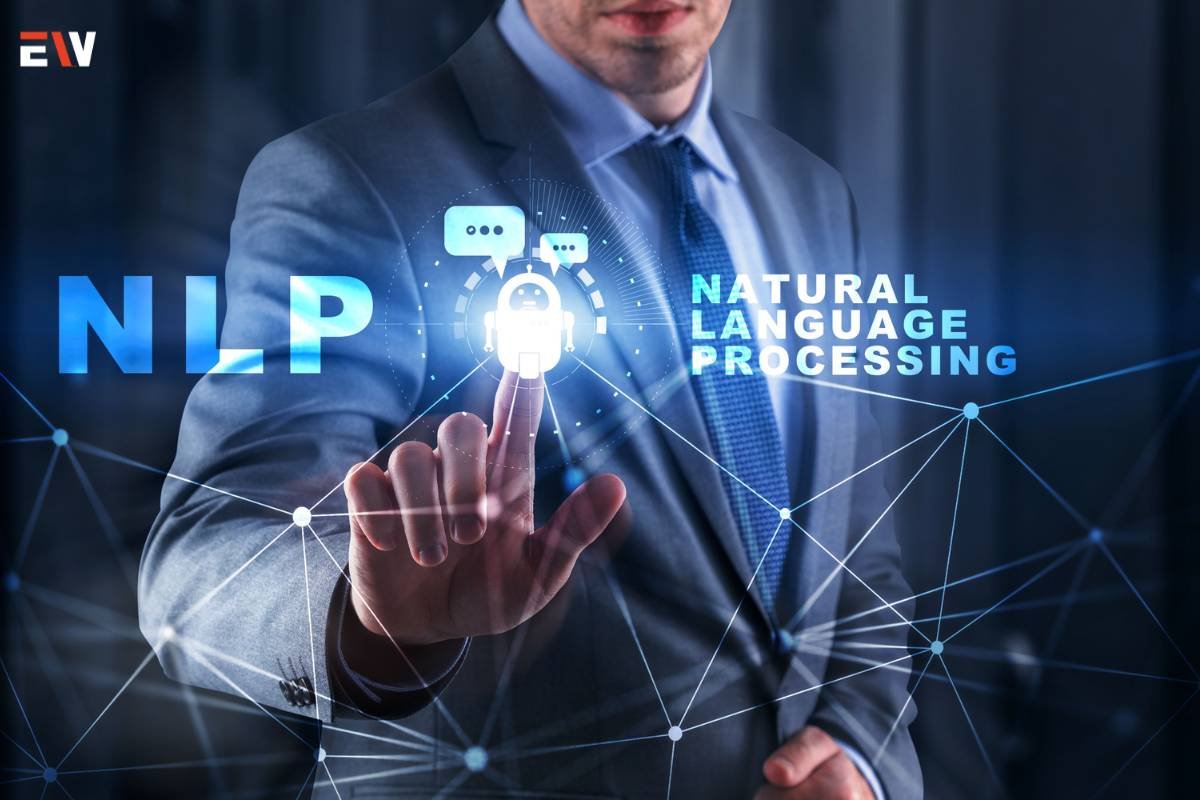In the realm of artificial intelligence and computational linguistics, Natural Language Processing (NLP) stands as a transformative force, enabling machines to comprehend, interpret, and generate human language. This comprehensive guide delves into the intricacies of Natural Language Processing, exploring its foundational concepts, applications across diverse industries, challenges, and the cutting-edge advancements shaping the future of this dynamic field.
Defining Natural Language Processing
1. Core Concepts
- Linguistic Understanding: At its core, NLP seeks to imbue machines with the ability to understand and interpret human language in a manner akin to human cognition. This involves comprehending semantics, syntax, and pragmatics to derive meaning from written or spoken words.
- Computational Linguistics: NLP integrates principles from linguistics and computer science to develop algorithms and models capable of processing and generating human language. This interdisciplinary approach encompasses a wide array of linguistic phenomena, from syntax and semantics to discourse and pragmatics.
2. Key Components
- Tokenization: The process of breaking down text into smaller units, or tokens, such as words or phrases, forms the foundation of NLP. Tokenization facilitates subsequent analysis and interpretation.
- Part-of-Speech Tagging: Assigning grammatical labels (nouns, verbs, adjectives, etc.) to each token aids in understanding the syntactic structure of a sentence or document.

- Named Entity Recognition (NER): Identifying and classifying entities (such as names of people, organizations, and locations) within a text enhances the extraction of meaningful information.
- Semantic Analysis: Going beyond syntax, NLP involves the interpretation of the meaning behind words and sentences, enabling machines to understand context and nuances.
2. Applications of Natural Language Processing
1. Conversational AI
- Chatbots: NLP underpins the functionality of chatbots, enabling them to engage in natural and context-aware conversations with users, whether in customer support, virtual assistants, or other applications.
- Voice Assistants: Virtual voice-activated assistants like Siri, Alexa, and Google Assistant leverage NLP to understand and respond to spoken commands, questions, and requests.
2. Information Extraction
- Text Summarization: NLP techniques are employed to automatically generate concise summaries of lengthy texts, facilitating quick comprehension and information retrieval.
- Sentiment Analysis: NLP algorithms analyze text data to discern the sentiment expressed, providing valuable insights for businesses to gauge customer opinions, product reviews, and social media reactions.
3. Language Translation
- Machine Translation: NLP is pivotal in the development of machine translation systems, enabling the automated conversion of text from one language to another with a focus on maintaining semantic accuracy.
- Cross-Language Information Retrieval: NLP facilitates retrieving information from documents in different languages, broadening access to knowledge across linguistic barriers.
3. Challenges in Natural Language Processing
1. Ambiguity and Context
The inherent ambiguity of human language poses a significant challenge for NLP systems. Words and phrases can carry multiple meanings, and the interpretation often relies on contextual cues, making accurate comprehension a complex task.
2. Data Quality and Bias
NLP models heavily depend on the quality and diversity of training data. Biases present in the training data can be perpetuated, leading to skewed results and reinforcing existing societal biases.
3. Handling Polysemy and Homonymy
Polysemy (multiple meanings for the same word) and homonymy (same spelling, different meanings) introduce ambiguity, requiring NLP models to discern the intended meaning based on context.
4. Advances and Future Trends in Natural Language Processing
1. Pre-trained Language Models

The advent of pre-trained language models, such as OpenAI’s GPT-3 and BERT, represents a paradigm shift. These models, trained on massive datasets, demonstrate exceptional language understanding and can be fine-tuned for specific tasks.
2. Explainable AI (XAI)
Addressing the “black-box” nature of some NLP models, research in Explainable AI focuses on developing models that provide transparent insights into their decision-making processes, fostering trust and interpretability.
3. Multimodal NLP
The integration of multiple modalities, such as text, images, and audio, expands the scope of NLP applications. Models capable of understanding and generating content across various modalities are at the forefront of research.
5. Ethical Considerations in Natural Language Processing
1. Bias and Fairness
One of the prominent ethical considerations in NLP is the potential for bias in language models. If training data reflects societal biases, NLP models can inadvertently perpetuate and even amplify those biases. Addressing bias in NLP involves careful curation of training datasets, ongoing monitoring, and the development of algorithms that prioritize fairness.
2. Privacy Concerns
As NLP systems process vast amounts of textual data, privacy concerns come to the forefront. Ensuring the responsible handling and protection of user data is essential. Striking a balance between personalized user experiences and safeguarding privacy requires robust data governance policies and transparent communication with users.
3. Explainability and Accountability
The black-box nature of some advanced NLP models raises questions about accountability and transparency. In critical applications such as legal or medical contexts, understanding how an NLP model arrives at a specific decision is crucial. The development of Explainable AI (XAI) techniques aims to provide insights into model decisions, fostering accountability and user trust.

A Complete Guide on How to Get Out of Debt and Achieve Financial Freedom
Debt can be a significant source of stress and financial strain, but with a strategic plan and commitment, it’s possible to break free and achieve lasting financial freedom.
6. Industry-Specific Applications of Natural Language Processing
1. Healthcare
NLP plays a vital role in healthcare, aiding in the analysis of medical records, extracting valuable information from clinical texts, and improving the efficiency of documentation. Additionally, NLP contributes to the development of virtual health assistants capable of understanding and responding to patients’ natural language queries.
2. Finance
In the financial sector, NLP is employed for sentiment analysis of financial news, customer support interactions, and regulatory compliance. NLP algorithms can analyze vast amounts of financial text data to inform investment decisions and assess market sentiment.
3. Legal
NLP is increasingly used in legal research, document analysis, and contract review. Advanced NLP models can quickly process and analyze legal documents, saving time for legal professionals and improving the accuracy of legal research.
4. Education
NLP is applied in the education sector for tasks such as automated grading, plagiarism detection, and personalized learning. By analyzing students’ written responses, NLP models can provide valuable insights into their comprehension and learning patterns.
7. Democratization of Natural Language Processing
The growing availability of NLP APIs (Application Programming Interfaces) and cloud-based services is democratizing access to NLP capabilities. Businesses and developers can leverage pre-trained NLP models without extensive expertise, accelerating the integration of natural language understanding in various applications.
8. Challenges in Cross-Language Understanding
While NLP has made significant strides in processing and understanding major languages, challenges remain in achieving robust cross-language understanding. Addressing linguistic diversity, idiomatic expressions, and variations in grammar across languages poses ongoing challenges for NLP researchers and developers.
9. Bridging the Gap with Human-Level Understanding
Achieving human-level understanding remains an aspirational goal in NLP. While models like GPT-3 exhibit remarkable language capabilities, they often lack a deep understanding of context, reasoning, and common sense. Advancing NLP toward human-level understanding involves addressing these nuanced aspects of language comprehension.
10. Future Directions and Open Research Questions
1. Context-Aware NLP

Enhancing context awareness is a key focus for the future of NLP. This involves developing models that can understand and leverage context in a more sophisticated manner, allowing for more nuanced and accurate language processing.
2. Multilingual Models
Advancements in multilingual NLP models aim to create models that can understand and generate content across a diverse range of languages. This research direction acknowledges the global nature of communication and the need for inclusive language technologies.
3. Collaboration with Other AI Disciplines
The future of NLP is closely intertwined with developments in other AI disciplines, such as computer vision and robotics. Integrating NLP capabilities with these domains contributes to the creation of more intelligent, context-aware systems that can interact seamlessly with humans.
Conclusion
Natural Language Processing has evolved from a niche field to a transformative force shaping how we interact with technology. From powering virtual assistants to revolutionizing customer service and information retrieval, NLP is at the forefront of AI innovation. As researchers continue to address challenges, ethical considerations, and industry-specific applications, the journey toward achieving more advanced, context-aware, and ethically responsible NLP systems unfolds. NLP’s impact extends beyond technology, influencing the way we communicate, access information, and navigate the complexities of the digital age. Embracing the opportunities and addressing the complexities will define the next chapter in the fascinating story of Natural Language Processing.









